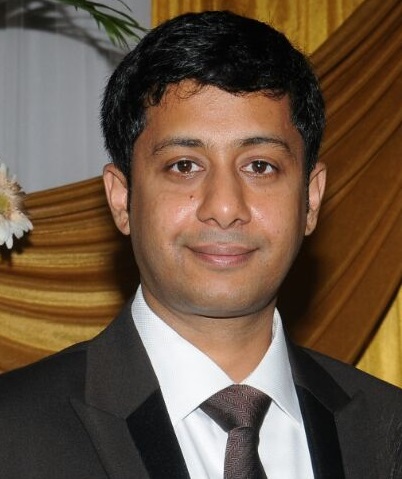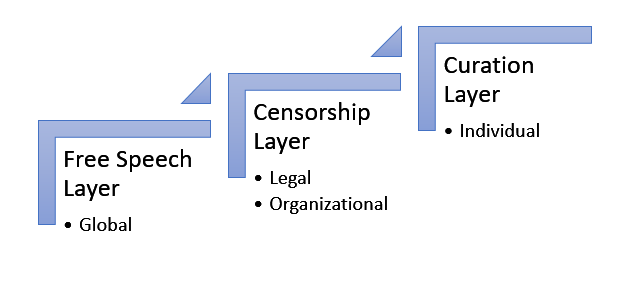
Prof. Naveen Amblee – Faculty, IIMA Marketing Area, Centre for Digital Transformation (CDT), Ravi J. Matthai Centre for Educational Innovation (RJMCEI)
THE PROBLEM
Twitter has been in the news a lot over the past few years, most recently with regards to the likely acquisition of the company by Elon Musk, currently the world’s richest person. Musk has described himself as a “free speech absolutist”[i], noting that “free speech is the bedrock of a functioning democracy” and that “Twitter is the digital town square”[ii]. Musk has gone on to criticize permanent bans including the one on former US President Donald Trump and indicated his intentions to reinstate such accounts if his acquisition of the platform should succeed[iii].
Consequently, there has been considerable handwringing from many users and policy makers on the liberal side of the socio-political regarding its implications on social and political discourse in the United States as well as around the world. Conversely, there has been a euphoric reaction from those on the right, who feel that Twitter has a strong left-leaning bias and that the takeover will allow for a more balanced discourse on the platform. Musk seems to agree, stating that “for Twitter to deserve public trust, it must be politically neutral, which effectively means upsetting the far right and the far left equally”[iv].
Questions have been raised about Musk’s free speech absolutism, with claims that this could involve potentially illegal speech that incites violence and harassment, which would not be protected by the First Amendment in the United States. In addition, critics have noted that the threshold for legally accepted speech varies considerably by jurisdiction, even within Western liberal democracies. Furthermore, Twitter has repeatedly clashed with authorities in major growth markets such as India, where regulations are considerably stricter. To this Musk has clarified his view that by free speech, he meant “that which matches the law” and that he was “against censorship that goes far beyond the law”[v].
This raises the obvious problem that the law varies by jurisdiction. In addition, advertisers tend to be wary of being associated with certain types of legal speech, as it may not be compatible with their brand values. Thus, if Twitter intends to remain a global player and expand into new markets while maximizing free speech wherever it operates, it will need a fundamentally new architecture. In this article, I propose a three-layer solution to resolve this problem, as illustrated in Figure 1.
THREE LAYER SOLUTION

Each of the three layers is progressively more restrictive in terms of the content that users can post and interact with.
Free Speech Layer: This is a layer where users can post content of nearly any type.
Censorship Layer: This is a layer that sits atop the Free Speech layer and restricts what can be read and/or posted.
Curation Layer: This is a layer atop the Censorship layer with which users interact.
FREE SPEECH LAYER
This layer – which is an infrastructure layer – limits the level of free speech in the entire system, and as such should be located in a legal environment that supports very high levels of free speech. In addition to legal issues, the willingness of infrastructural firms to support the maximum level of legal free speech should be high. There are at least two ways to achieve this:
Locating the infrastructure in the United States, protected by the First Amendment
While some Scandinavian countries may claim to be freer, their limited clout means that they would likely be unable to host and defend large platforms against sustained external pressure.
Locating the infrastructure on the blockchain, thereby making it potentially free from jurisdictional issues
While the First Amendment in the United States along with its global heft make it an ideal location for the Free Speech layer, it is possible that firms providing the supporting infrastructure could come under pressure from lobbies opposed to high levels of uncensored speech on the platform. Hosting the Free Speech layer on a globally distributed blockchain would help mitigate this risk.
CENSORSHIP LAYER
This is a layer that sits atop the Free Speech layer and restricts what can be read and / or posted. There are two sub-layers. The first is the Legal layer that censors the Free Speech layer based on local rules and regulations. This layer would simply follow the law of the land and censor content coming from and going onto the Free Speech layer. For example, users in the European Union would interact with the Free Speech layer through a Censorship layer that is compliant with the EU’s Digital Services Act[vi]. Likewise, users in India would interact through a Censorship layer that follows the guidelines laid down by the Ministry of Electronics & Information Technology[vii]. The second is the Organizational layer, which further censors the Free Speech layer based on the platform’s policies. The architecture would allow for a unique Censorship layer for each jurisdiction.
CURATION LAYER
This is the layer with which users interact. The curation layer can be customized for each individual user to curate content from the Censorship layer. Users continue to post onto the Free Speech layer through the Censorship layer while interactions with other users are moderated via the Curation layer. Users can choose from a variety of Curation templates and further customize these to generate Curation layers that match both their preferences for the type of speech as well as their levels of tolerance for uncensored speech, avoiding the need for platforms to “shadow ban” users and content that make it through the Censorship layer. Advertisers will be able to select which Curation layers to engage with according to their espoused values.
The proposed three-layer solution would allow Twitter – and other social media platforms – to successfully navigate the minefield of legal and social issues that they are currently facing, both in the United States and across the globe. The use of multiple layers will also allow Twitter to be much more open about their algorithms, given that users and advertisers can now choose among algorithms represented by different Curation layers. As Musk noted after the announcement of the Twitter deal: “Sunlight is the best disinfectant”[viii]. In addition to fostering greater transparency, the proposed framework will allow contentious issues to be dealt by lawmakers and the courts, rather than in the boardroom, and allow for a fairer and healthier discourse to the benefit of society.
<Background image and feature image sourced from official Twitter account of Mr Elon Musk>
Endnotes
[i] https://twitter.com/elonmusk/status/1499976967105433600
[ii] https://twitter.com/elonmusk/status/1518677066325053441
[iii] https://twitter.com/elonmusk/status/1524881263470993435
[iv] https://twitter.com/elonmusk/status/1519415674111672325
[v] https://twitter.com/elonmusk/status/1519036983137509376
[vi] https://digital-strategy.ec.europa.eu/en/policies/digital-services-act-package
[vii] https://mib.gov.in/digital-media-guidelines-and-policies
[viii] https://twitter.com/elonmusk/status/1521574200183566338

